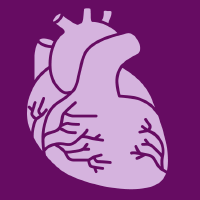Topic Menu
► Topic MenuTopic Editors



2. Biomedical Engineering & Imaging Sciences, King’s College London, St Thomas Hospital, London SE17EH, UK

Usefulness and Clinical Applications of 3D Printing in Cardiovascular Diseases 2.0
Topic Information
Dear Colleagues,
Given the success of the first edition, we believe it is the time to launch the second edition of this Topic. This second edition of the Topic aims to focus on recent advances in 3D printing and its value or applications in cardiovascular diseases. Three-dimensional printing has evolved rapidly over the last decade, showing great potential in many medical domains, in particular, in the field of cardiovascular disease. Patient-specific or personalized 3D-printed models are shown to enhance our understanding of complex cardiac anatomy and pathology; assist presurgical planning and the simulation of complicated procedures for the treatment of cardiovascular diseases; improve the education of medical students or healthcare professionals; and improve communication between physicians and patients. This issue will highlight the current advances in 3D printing, with special emphasis given to patient-specific 3D-printed models in the diagnosis and management of congenital heart disease and other cardiovascular diseases. Technological developments, including 3D printing materials and bioprinting or tissue engineering, 3D printing integrated with virtual reality and augmented reality, as well as artificial intelligence, are also included in the potential topics of this Topic.
Prof. Dr. Zhonghua Sun
Prof. Dr. Massimo Chessa
Dr. Israel Valverde
Prof. Dr. Alexander Van De Bruaene
Topic Editors
Keywords
- 3D printing
- congenital heart disease
- cardiovascular disease
- virtual reality
- augmented reality
- artificial intelligence
- bioprinting
Participating Journals
| Journal Name | Impact Factor | CiteScore | Launched Year | First Decision (median) | APC |
|---|---|---|---|---|---|

Applied Biosciences
|
- | - | 2022 | 37.7 Days | CHF 1000 |

Bioengineering
|
4.6 | 4.2 | 2014 | 17.7 Days | CHF 2700 |

Biomolecules
|
5.5 | 8.3 | 2011 | 16.9 Days | CHF 2700 |

Journal of Cardiovascular Development and Disease
|
2.4 | 2.4 | 2014 | 20.3 Days | CHF 2700 |

Journal of Clinical Medicine
|
3.9 | 5.4 | 2012 | 17.9 Days | CHF 2600 |

Micromachines
|
3.4 | 4.7 | 2010 | 16.1 Days | CHF 2600 |

Reports
|
0.9 | - | 2018 | 20.6 Days | CHF 1400 |

MDPI Topics is cooperating with Preprints.org and has built a direct connection between MDPI journals and Preprints.org. Authors are encouraged to enjoy the benefits by posting a preprint at Preprints.org prior to publication:
- Immediately share your ideas ahead of publication and establish your research priority;
- Protect your idea from being stolen with this time-stamped preprint article;
- Enhance the exposure and impact of your research;
- Receive feedback from your peers in advance;
- Have it indexed in Web of Science (Preprint Citation Index), Google Scholar, Crossref, SHARE, PrePubMed, Scilit and Europe PMC.

